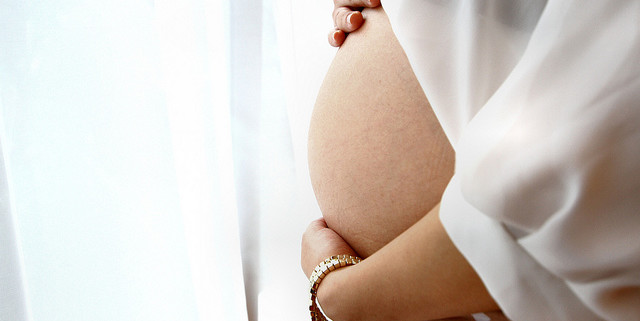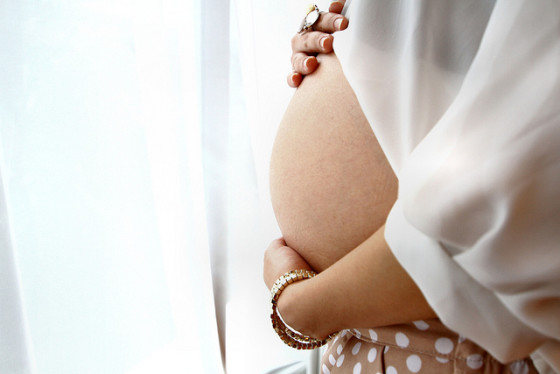Labor Stages: From First Contraction to Holding Your Baby
Last updated March 23, 2018.
We’ve all watched women deliver babies on TV or in the movies; it seems like you start feeling contractions, push, and then the baby is born. That’s more or less true, but it skips over a lot of the intermediate steps. How long from first contraction to birth? What is the contractions timeline? Let’s take a look at your labor stages from the first twinge to the final push.
Contents
First Stage of Labor: Real Contractions
The first stage of labor starts when you start having real contractions. It’s broken down into three parts: early labor, active labor, and transition.
Early Labor
Once the contractions kick in, you’re in early labor. Sometimes it’s tough to tell when it actually starts; you may have Braxton Hicks contractions that fade away and your early contractions may be mild and not very noticeable. Once your contractions become regular and start getting longer and closer together, you’re officially in labor. During this phase, your cervix starts to “efface,” or get thinner, and dilate in preparation to let the baby’s head through.
Your contractions may be mild enough at this point that you can continue on with your day as usual. Try to get some rest and drink plenty of water in preparation for active labor, which will be harder on your body. You may notice some vaginal discharge — your “bloody show” — caused by the breakup of the mucus plug that blocks your cervix throughout the pregnancy.
By the end of this stage, your contractions will be around 5 minutes apart and last for about a minute. Your cervix will be 4-6 centimeters dilated and you’ll be moving into active labor. Depending on how many children you’ve had, early labor can last anywhere from 6-12 hours.
Active Labor
“Active labor” is more intense than early labor; your cervix will continue to dilate to around 8 centimeters and your contractions will be increasingly intense. You probably won’t be able to continue talking or performing normal activities through them. They’ll last about a minute and happen every 3-5 minutes. At this point, it’s time to head to the hospital or birthing center or call your midwife.
The active labor phase may last 3-5 hours. If you’re going to have an epidural, active labor is typically the time to do it.
Transition
“Transition” is more intense yet — for many women, this is the hardest part. Your contractions will be very strong and last for more than a minute with just a couple minutes’ rest between. Your cervix will continue to dilate until it hits the full 10 centimeters. You may feel the need to push, but your doctor may recommend holding back to avoid damaging the cervix and causing inflammation that may delay delivery. This is the time to bring in your breathing exercises, take a warm bath or shower, or get a gentle massage.
The transition phase can last anywhere from half an hour to several hours.
Second Stage of Labor: Preparation for Delivery
Once you’re dilated to the full 10 centimeters, you’re in the second stage of labor. The baby is moving lower and lower in your pelvis in preparation for delivery. Your uterus will do a lot of the work for you in terms of moving the baby down the birth canal, so you may want to wait to push until the baby is nearing the end of the birth canal. Some health care providers may recommend pushing earlier; you should talk to your doctor or midwife about your preferences in advance. Once your little one gets very low in your pelvis, you’ll start to feel the urge to push.
It’s tempting to just give in to your body’s demands and push right through, but remember to listen to the instructions of your health care provider. They’ll be checking to make sure your baby stays in the proper position. They may also want you to slow down to allow your birth canal time to stretch; that can help you avoid tearing the perineum during delivery.
Eventually, your little one will “crown” — the widest part of the head will pass and the baby will slide the rest of the way out with a few quick pushes. Your health care provider will suction out the baby’s nose if necessary and clamp the umbilical cord so that you or your partner can cut it. Barring complications, you’ll get to hold your baby right away. This part of labor can last anywhere from an hour to several hours.
Third Stage of Labor: Delivering the Placenta
That’s it, right? The baby is born, the show is over? Not quite. You still have the third stage of labor to go — delivering the placenta. The placenta is larger than you’d think — it can weigh up to 3 pounds! However, it’s soft and should come out easily with just a few pushes. Your uterus will contract afterward and your health care provider will check to make sure it stays contracted. That helps clamp off the blood vessels that were connected to the placenta and prevent bleeding.
If your perineum tore or was cut during delivery, your doctor will stitch it up during this phase.
The End of the Labor Timeline: Enjoy Your Little One!
Once the baby is delivered, the hard part is over. Delivering the placenta is usually fairly painless, although you may have contractions for a few days afterward. If they’re particularly uncomfortable, ask your medical care provider about pain management options.
Now it’s time to get down to the business of being a parent. Your doctor will perform some basic tests to make sure your little one is healthy and then you get to take over. If you’re going to breastfeed, you can start soon as soon as the baby is willing. Take the time to bond and enjoy your new baby — congratulations!
Image Credit and License









Leave a Reply
Want to join the discussion?Feel free to contribute!